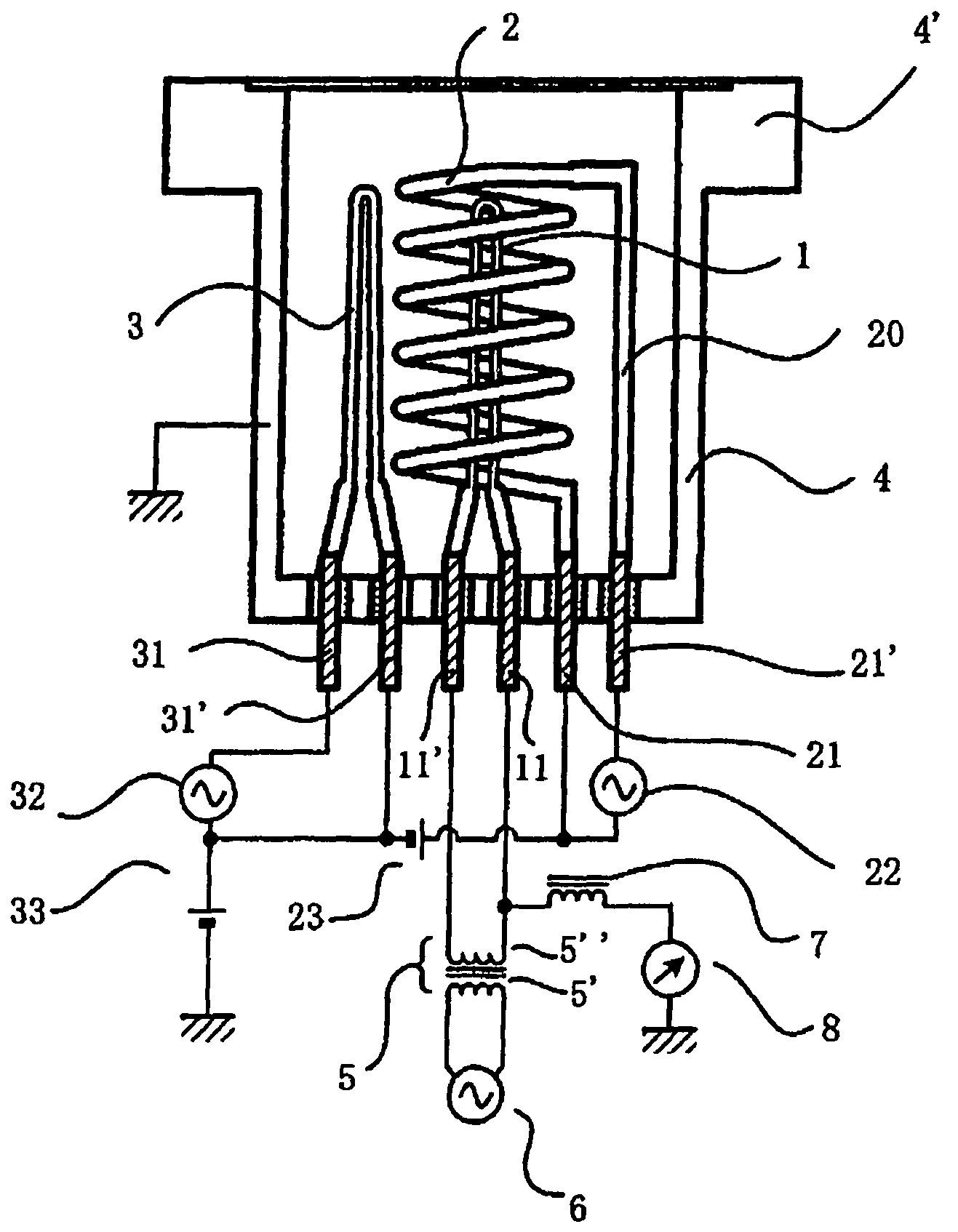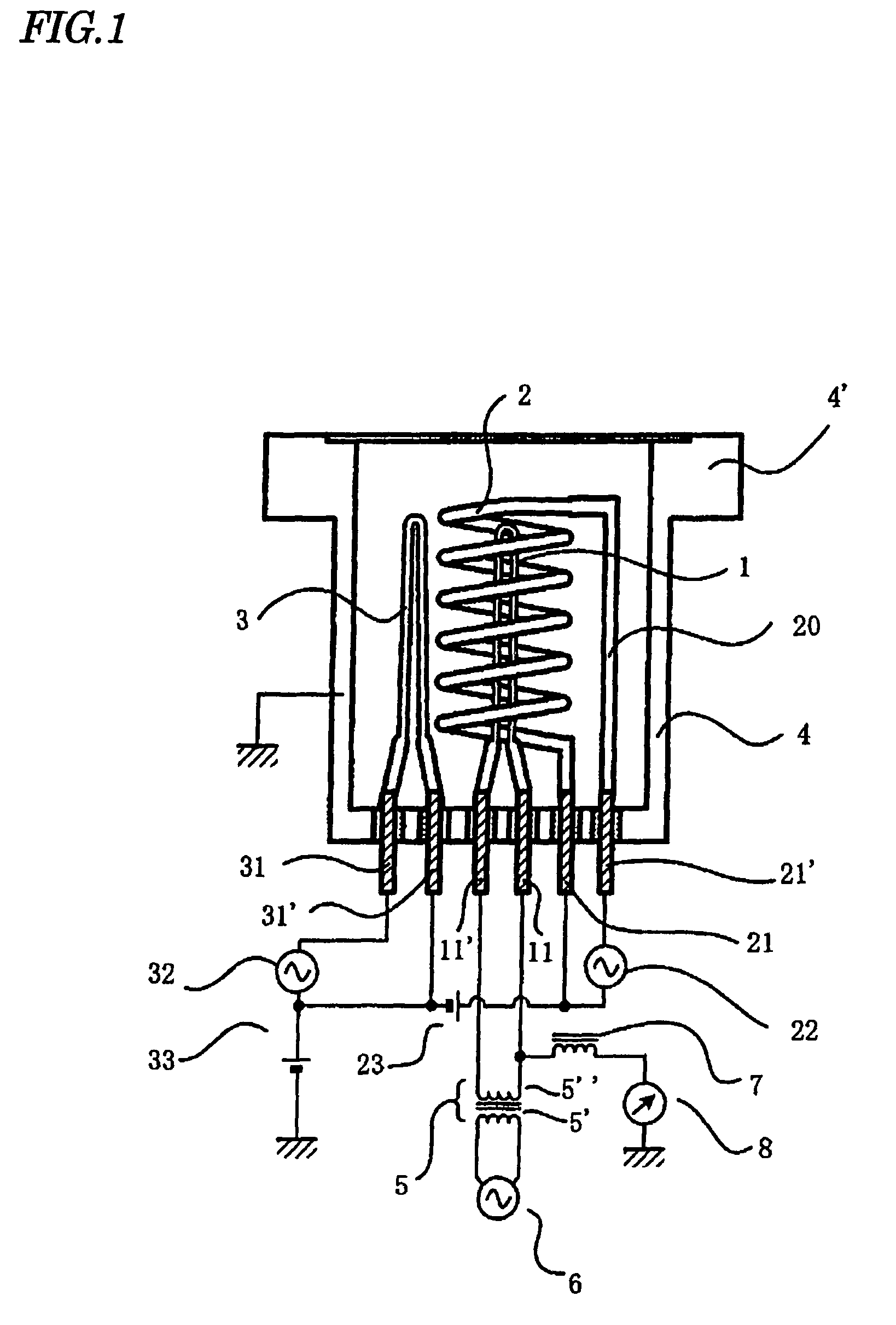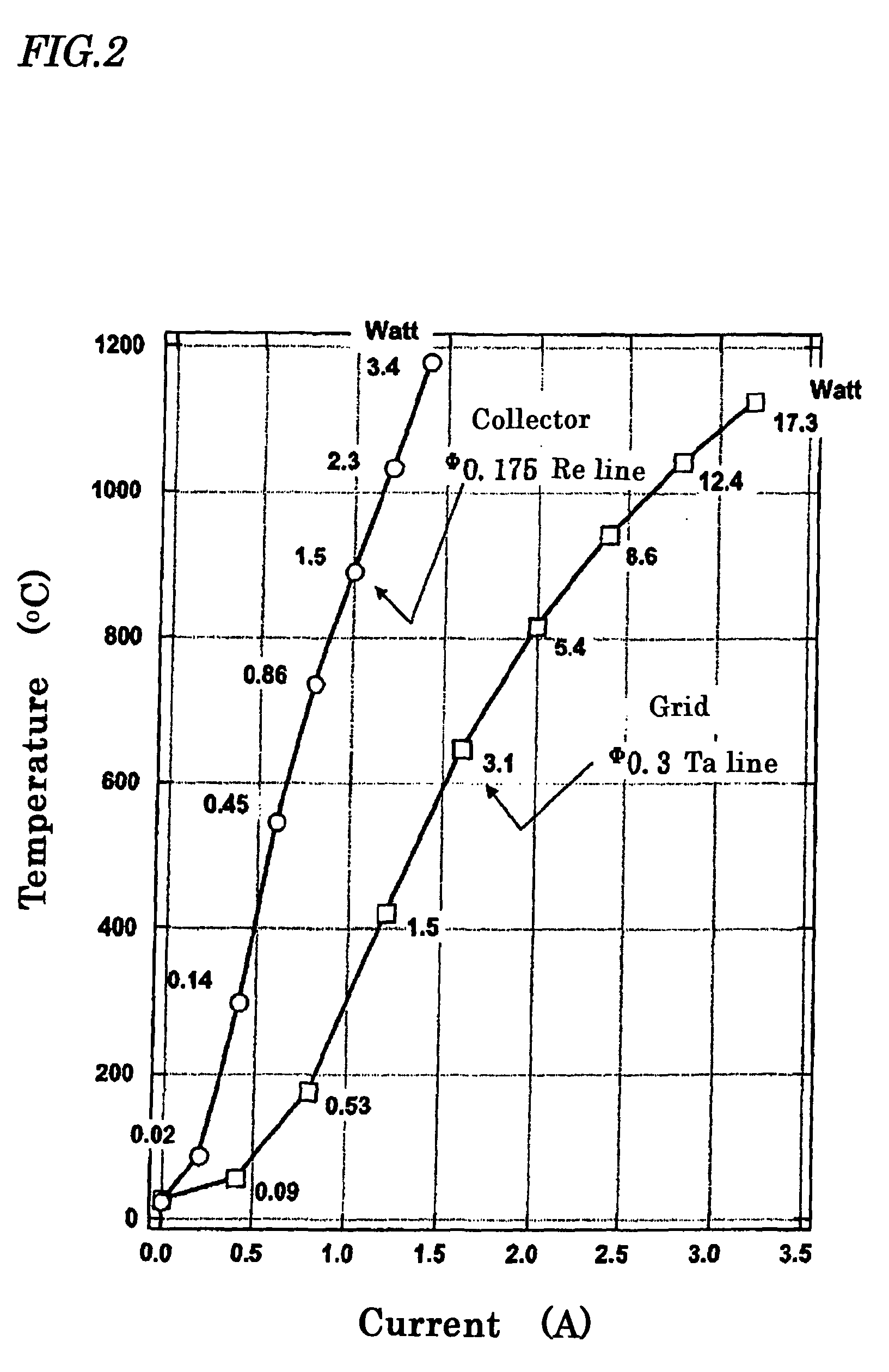Ionization vacuum gauge
a vacuum gauge and ionization technology, applied in vacuum gauges, fluid pressure measurement, instruments, etc., can solve the problems of inaccurate pressure measurement, non-uniformity of vacuum products, defective products, etc., and achieve the effect of improving pressure measurement accuracy and controlling accurately
- Summary
- Abstract
- Description
- Claims
- Application Information
AI Technical Summary
Benefits of technology
Problems solved by technology
Method used
Image
Examples
Embodiment Construction
[0049]Embodiments of the invention will be described in detail below with reference to the drawings.
[0050]FIG. 1 shows an example that the BA type ionization vacuum gauge according to the invention is fitted to a vacuum apparatus (not shown). Like constituting elements as those shown in FIG. 10 are denoted by same reference numerals.
[0051]A grid 2 has a shape that a tantalum wire having a line diameter of Φ0.3 mm is wound nine turns into a spiral shape having an inner diameter of 6 mm. One end of the spiral line is connected to a feedthrough terminal 21, and the other end is connected to another feedthrough terminal 21′ through a support electric wire 20. The two terminals are connected to a voltage-variable AC power supply 22 for heating the grid.
[0052]As shown in FIG. 2, the grid 2 of the above-described size can independently raise a temperature up to about 500° C. when a current of 1.4 A (2.3 W) is flowed to the grid 2, and up to 1000° C. when a current of 2.6 A (10.5 W) is flow...
PUM
| Property | Measurement | Unit |
|---|---|---|
| surface temperature | aaaaa | aaaaa |
| pressure | aaaaa | aaaaa |
| temperature | aaaaa | aaaaa |
Abstract
Description
Claims
Application Information
 Login to View More
Login to View More - R&D
- Intellectual Property
- Life Sciences
- Materials
- Tech Scout
- Unparalleled Data Quality
- Higher Quality Content
- 60% Fewer Hallucinations
Browse by: Latest US Patents, China's latest patents, Technical Efficacy Thesaurus, Application Domain, Technology Topic, Popular Technical Reports.
© 2025 PatSnap. All rights reserved.Legal|Privacy policy|Modern Slavery Act Transparency Statement|Sitemap|About US| Contact US: help@patsnap.com



